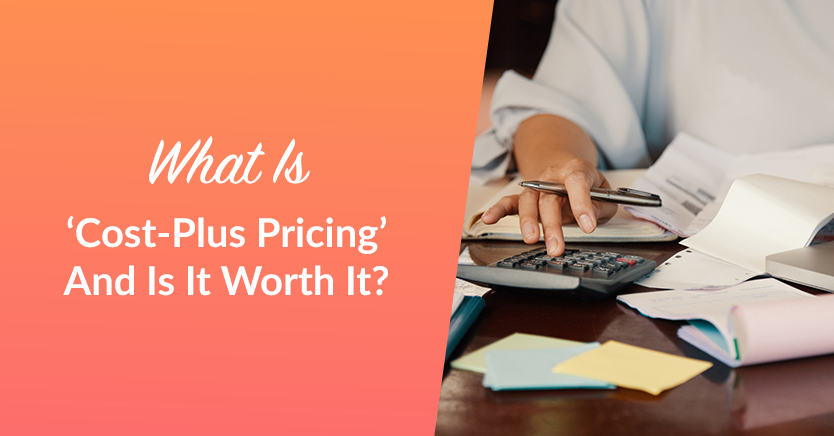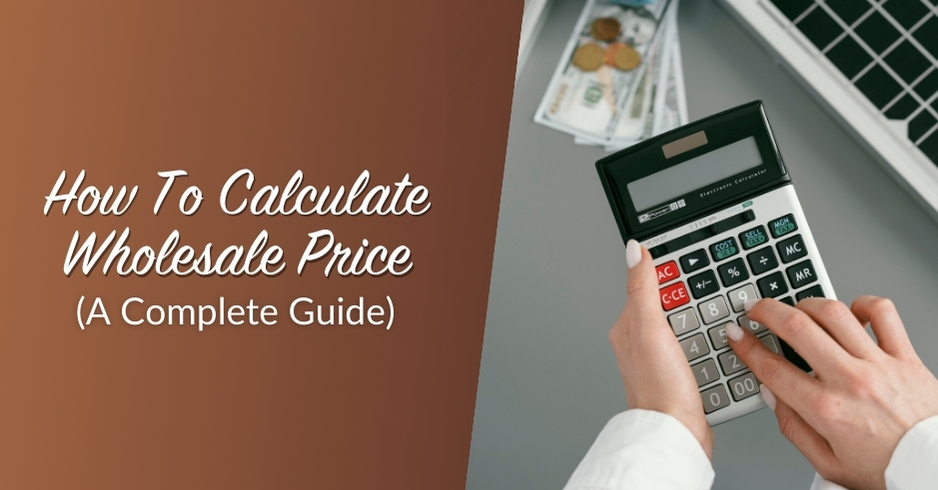
Do you want to know how to set the proper pricing for your product or service? Introduce yourself to the world of cost-plus pricing! This innovative pricing technique entails adding a percentage markup to your production cost, allowing you to attain the ideal cost-profit ratio.
Before you headfirst into this strategy, however, it’s important for you to understand what makes cost-plus pricing tick. In this article, we will discuss what is cost-plus pricing. We will also take a closer look at its advantages and drawbacks, and give you a sense of whether it’s worth the effort. Let’s get started!
What Is ‘Cost-Plus Pricing’?
As a business owner, one of the biggest challenges you’ll face is setting the right price for your products or services. After all, pricing plays a vital role in the success of your business and ultimately determines your profitability.
To help you navigate the complex world of pricing, it’s critical to understand the distinction between pricing policy and price strategy. While they overlap, they are not the same thing:
- Pricing relates to how you establish your prices based on costs, value, demand, and competition.
- Pricing strategy, on the other hand, refers to how you utilize pricing to achieve company objectives such as growing sales or decreasing backlogs.
One pricing strategy that’s commonly used is cost-plus pricing. This involves adding a markup to the unit cost of your product or service, which is made up of both fixed and variable costs.
Imagine you own a small bakery and need to decide how much to charge for a batch of cupcakes.
You must first compute the entire cost of producing the cupcakes to determine the price. This covers the price of the materials, labor, and any other costs incurred specifically for creating the cupcakes.
Let’s assume that it costs $12 to make a batch of 12 cupcakes. Following the cost-plus pricing, you would then add a markup to the cost to get at the final price. So, if you want a profit margin of 50%, you need to add 50% of the cost ($6) to the original cost ($12), bringing the total cost to $18.
In a nutshell, this pricing strategy ensures that you cover your costs while also earning a profit.
Pros And Cons
While cost-plus pricing may seem straightforward, there are a lot of factors to consider before implementing this pricing strategy. So, before you jump in, let’s explore the pros and cons of cost-plus pricing and whether it’s the right pricing strategy for your business:
Advantages of Cost-Plus Pricing
- It is simple to calculate the prices of products or services. However, you need to define the overhead allocation method. To be regular in calculating prices of several products and services.
- It is a great pricing method for contract profits. As the contractor is certain of having their costs reimbursed by the customer and of making a profit.
- The pricing can be justified by the supplier or the manufacturer, simply by pointing out the increase in the costs of production.
Disadvantages Of Cost-Plus Pricing
On the flip side, cost-plus pricing also has several drawbacks that businesses should consider before giving it a go:
- One major disadvantage is that it excludes competitive prices, as businesses may set their prices without taking into account what their competitors are charging for similar products or services. This can result in prices that are either too high or too low, impacting market share, profits, and customer patronage.
- This can lead to a lack of innovation in product or service design, as the engineering departments may not see the need to carefully tailor products to the target market. Instead, they may simply design products based on their preferences and launch them on the market.

- Additionally, when using cost-plus pricing in government contracts, suppliers may include as many costs as they want, as there are no cost-reduction incentives included in the contract. This can result in unnecessary expenses and inefficiencies.
- It also does not account for replacement costs, as it is based on historical costs. Ignoring these costs can lead to products or services being priced too high or too low, ultimately hurting the business’s bottom line.
- Lastly, cost-plus pricing is not acceptable for pricing products and services that are sold in a competitive market. This is because they are usually overpriced. Product and service prices should be set at what the customers are willing to pay. Not based on a sum total of your costs plus a markup percentage to guarantee you a profit.
Criticisms Around Cost-Plus Pricing
Market conditions should be taken into account when setting prices, however, cost-plus pricing can occasionally overlook this critical aspect. This strategy’s critics argue that it doesn’t give businesses an effective pricing plan.
One of the main challenges is that, particularly in businesses where prices vary depending on volume, it is challenging to estimate the cost of producing a unit before determining its price. This can result in inaccurate pricing and a decline in profitability.
Cost-plus pricing also frequently leads to high prices in markets with weak demand and low prices in regions with strong demand. Because the prices are different from what they would be if market conditions were taken into account, this can reduce a company’s profits.
Conclusion
Businesses should not exclusively rely on their pricing decisions on costs. Many industrial product and service businesses sell at incremental costs but still make profits from their best customers and short-notice deliveries.
When setting prices, business owners should take into account what the market will bear and what customers can afford while still making a profit. They should also consider production costs to determine what products to produce and in what amounts.
In the end, pricing requires taking into account the prices that customers can afford before deciding whether costs allow for competition in the low-cost market or the premium-priced market, where customers care more about quality and features.




